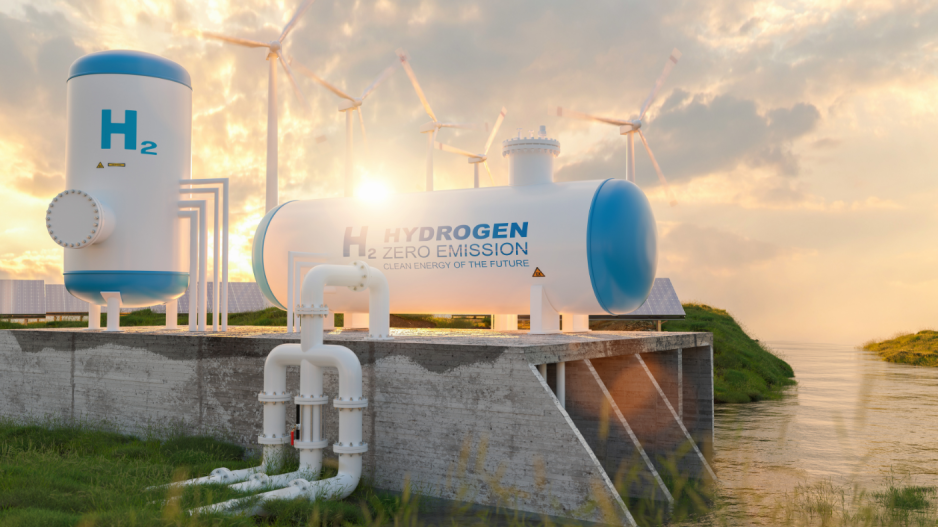The Green Horizon: The Potential of Green Hydrogen
In the pursuit of a sustainable and carbon-neutral future, the focus has shifted towards green hydrogen, positioning it as an important player in the ongoing energy transition. Green hydrogen, produced through the electrolysis process using renewable energy sources, stands out as a compelling solution to decarbonize diverse sectors. This article navigates through its production methods, diverse applications, and the potential it carries in sculpting a cleaner, more sustainable global landscape.
From green to pink, hydrogen - a colourless gas - is given some colourful terms depending on the type of production used. Green hydrogen is produced by electrolyzing water using electricity generated from renewable sources like wind or solar. The electrolysis process separates water into hydrogen and oxygen, and when powered by clean energy, the resulting hydrogen is deemed "green" due to its low environmental impact.
The transportation sector is a major contributor to carbon emissions. Green hydrogen can be used as a clean fuel for different modes of transportation, including buses and trucks. Fuel Cell Electric Vehicles (FCEVs) which utilize hydrogen to produce electricity on board, emit only water vapor, making them a promising alternative for zero-emission road transport. Additionally, manufacturers are taking an interest in hydrogen internal combustion engines (H2 ICE) as an additional solution.
Hydrogen is a crucial feedstock in various industrial processes. It is commonly used in the production of ammonia for fertilizers, petroleum refining, and the manufacturing of chemicals, including methanol and hydrochloric acid. Hydrogen is also employed in the steel industry for reducing iron ore into iron. By replacing fossil-fuel-derived hydrogen with the green counterpart, these industries can significantly reduce their carbon footprint and contribute to a more sustainable future.
Green hydrogen can also be utilized for power generation, either through combustion in turbines or by utilizing fuel cells. This application allows for the integration of renewable energy into the existing power grid, providing a stable and environmentally friendly energy source.
Additionally, green hydrogen serves as a promising solution for energy storage. Excess renewable energy, which often goes to waste due to fluctuations in demand or curtailment, can be used to produce green hydrogen during periods of abundance. The stored hydrogen can then be converted back into electricity when demand is high, providing a reliable and flexible energy storage option, or even used directly to the previously mentioned sectors.
In 2022, Europe’s total hydrogen demand reached 8.2 Mega tonnes. The biggest share of hydrogen demand in 2022 came from refineries, responsible for 57% of total hydrogen use, followed by the ammonia industry with 24%.
Water electrolysis capacity reached 0,3% of the total hydrogen production capacity in Europe in 2022, compared to 0,1% in 2020. Industrial offtakes in Europe have announced projects that would generate up to 7.1 Megatons of annual demand for clean hydrogen by 2030. The European countries with the largest announced clean hydrogen consumption in industry are Spain, France, Germany, and Sweden.
The GreenH2CY project, co-financed by the European Union through the Innovation Fund, marks a significant milestone in Cyprus as the first-of-its-kind initiative aimed at producing hydrogen from renewable energy sources. The project has started in June of 2023 and is expected to enter operation in September of 2025.
The project includes the installation and operation of a 2-megawatt (MW) Proton Exchange Membrane (PEM) electrolyser producing 150 tonnes of hydrogen fuel per year, hydrogen storage facilities and a refuelling station located at Larnaca District, Aradippou Municipality Industrial Area.
The project targets the decarbonization of the transport sector, supplying green hydrogen to light and heavy trucks. Based on the latest National Inventory Report of Cyprus, in 2021 transport contributed 24% to the total emissions of the country.
The development of a roadmap for the introduction of hydrogen as an energy vector in the energy system of Cyprus is getting more attention from the relevant governmental authorities. For the achievement of the objectives set through the REPowerEU plan, and particularly the development of the Hydrogen market on the island, the Ministry of Energy, Commerce, and Industry received a technical support service. The study was completed in January 2023. The revised National Energy and Climate Plan, currently under development, will form the basis for the formulation of the National Hydrogen Strategy expected within this year.
At the same time, the Cyprus Energy Regulatory Authority, with input from external consultants, prepared a report titled 'Guidelines for the Development of the Hydrogen Value Chain in the Republic of Cyprus' (CERA Report No. 18/2022), addressing the need for the regulatory framework governing the hydrogen market.






